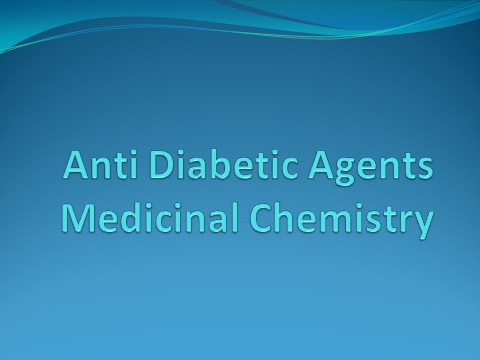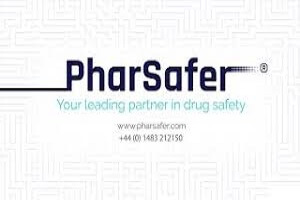Anti Diabetic Agents Medicinal Chemistry – PPT
UNIT – V 07 Hours
Antidiabetic agents: Insulin and its preparations
Sulfonyl ureas: Tolbutamide*, Chlorpropamide, Glipizide, Glimepiride.
Biguanides: Metformin.
Thiazolidinediones: Pioglitazone, Rosiglitazone.
Meglitinides: Repaglinide, Nateglinide. Glucosidase inhibitors: Acrabose, Voglibose.
anti diabetic agent medicinal chemistry ppt
Anti-Diabetic Agents: Medicinal Chemistry Overview
Anti-diabetic agents are medications used to treat diabetes mellitus, a metabolic disorder characterized by chronic hyperglycemia (high blood sugar) due to defects in insulin secretion, insulin action, or both. There are various classes of anti-diabetic agents, each targeting different pathways to control blood glucose levels. Below is an overview of the medicinal chemistry behind key classes of anti-diabetic agents.
1. Insulin and Insulin Analogues
- Mechanism of Action: Insulin reduces blood glucose by promoting glucose uptake in cells (mainly muscle and fat) and inhibiting glucose production in the liver.
- Chemical Structure: Insulin is a peptide hormone consisting of two chains (A and B chains) connected by disulfide bonds. Modifications to insulin’s amino acid sequence can alter its pharmacokinetics.
- Insulin Analogues: Alterations in the amino acid sequence of insulin lead to rapid-acting (e.g., insulin lispro, insulin aspart) or long-acting insulin analogues (e.g., insulin glargine, insulin detemir). These modifications affect solubility, aggregation, or receptor binding, allowing tailored duration of action.
2. Biguanides (e.g., Metformin)
- Mechanism of Action: Metformin decreases hepatic glucose production and increases insulin sensitivity in peripheral tissues without increasing insulin secretion.
- Chemical Structure: Metformin contains a biguanide moiety (two guanidine units connected by a nitrogen). It is a small, highly polar compound, which affects its absorption and distribution.
- Medicinal Chemistry Notes: Metformin works through the activation of AMP-activated protein kinase (AMPK), a key regulator of energy metabolism. Its hydrophilic nature limits its oral bioavailability but contributes to its low risk of hypoglycemia.
3. Sulfonylureas (e.g., Glipizide, Glyburide)
- Mechanism of Action: Sulfonylureas stimulate insulin secretion from pancreatic β-cells by closing ATP-sensitive potassium (K-ATP) channels, leading to membrane depolarization and calcium influx.
- Chemical Structure: These compounds have a sulfonylurea core, with different substituents on the aryl ring (R1) and the sulfonyl group (R2) that affect potency and pharmacokinetics.
- Medicinal Chemistry Notes: Sulfonylureas are divided into first-generation (e.g., tolbutamide) and second-generation (e.g., glimepiride) based on their potency and duration of action. Second-generation sulfonylureas are more potent and have longer half-lives.
4. Meglitinides (e.g., Repaglinide, Nateglinide)
- Mechanism of Action: Meglitinides, like sulfonylureas, increase insulin secretion by binding to K-ATP channels on pancreatic β-cells but have a more rapid onset and shorter duration of action.
- Chemical Structure: Meglitinides are non-sulfonylurea compounds with a benzoic acid derivative structure.
- Medicinal Chemistry Notes: These agents allow for flexible dosing due to their short action, making them suitable for postprandial glucose control.
5. Thiazolidinediones (TZDs) (e.g., Pioglitazone, Rosiglitazone)
- Mechanism of Action: TZDs activate peroxisome proliferator-activated receptor gamma (PPARγ), a nuclear receptor that regulates the expression of genes involved in glucose and lipid metabolism. This improves insulin sensitivity in adipose tissue, muscle, and liver.
- Chemical Structure: TZDs contain a thiazolidinedione ring, which is crucial for PPARγ binding, and various side chains that influence pharmacokinetic properties.
- Medicinal Chemistry Notes: The binding of TZDs to PPARγ causes transcriptional activation of genes involved in glucose uptake and lipid storage, though they are associated with side effects like weight gain and fluid retention.
6. Alpha-Glucosidase Inhibitors (e.g., Acarbose, Miglitol)
- Mechanism of Action: These agents inhibit α-glucosidase enzymes in the small intestine, delaying carbohydrate digestion and glucose absorption, thus reducing postprandial blood sugar spikes.
- Chemical Structure: Acarbose is a pseudo-tetrasaccharide, while miglitol is a desoxynojirimycin derivative. Both have structures resembling carbohydrates, allowing them to competitively inhibit α-glucosidase.
- Medicinal Chemistry Notes: Their carbohydrate-like structure enables binding to digestive enzymes but limits systemic absorption, reducing the risk of hypoglycemia.
7. Dipeptidyl Peptidase-4 (DPP-4) Inhibitors (e.g., Sitagliptin, Saxagliptin)
- Mechanism of Action: DPP-4 inhibitors prolong the action of incretin hormones (GLP-1 and GIP) by preventing their degradation. Incretins stimulate insulin release and inhibit glucagon secretion.
- Chemical Structure: DPP-4 inhibitors typically contain a β-amino acid or pyrimidine core, with substituents that interact with the enzyme’s active site to inhibit its activity.
- Medicinal Chemistry Notes: DPP-4 inhibitors are orally active, and their structural features allow for competitive binding to the enzyme without directly affecting insulin sensitivity or secretion.
8. Glucagon-Like Peptide-1 (GLP-1) Receptor Agonists (e.g., Exenatide, Liraglutide)
- Mechanism of Action: GLP-1 receptor agonists mimic the action of GLP-1, enhancing insulin secretion in a glucose-dependent manner, suppressing glucagon, and slowing gastric emptying.
- Chemical Structure: GLP-1 agonists are peptide-based drugs with structural similarity to native GLP-1 but often include modifications (e.g., substitution of amino acids) to increase resistance to DPP-4 degradation and extend half-life.
- Medicinal Chemistry Notes: These agents are administered subcutaneously due to their peptide nature, and their modifications (e.g., fatty acid conjugation in liraglutide) improve pharmacokinetics and stability.
9. Sodium-Glucose Co-Transporter 2 (SGLT2) Inhibitors (e.g., Canagliflozin, Dapagliflozin)
- Mechanism of Action: SGLT2 inhibitors reduce renal glucose reabsorption by inhibiting the sodium-glucose co-transporter 2 in the proximal tubule, leading to increased urinary glucose excretion.
- Chemical Structure: SGLT2 inhibitors are glucoside derivatives with a characteristic C-glucosidic linkage that prevents rapid hydrolysis. The aglycone portion interacts with the SGLT2 protein to block glucose reabsorption.
- Medicinal Chemistry Notes: These agents have a novel mechanism that does not depend on insulin and have shown additional benefits in reducing body weight and blood pressure.
10. Amylin Analogues (e.g., Pramlintide)
- Mechanism of Action: Amylin analogues mimic the action of amylin, a hormone co-secreted with insulin. They slow gastric emptying, suppress glucagon secretion, and promote satiety.
- Chemical Structure: Pramlintide is a synthetic analogue of human amylin, with three amino acid substitutions to improve solubility and reduce aggregation.
- Medicinal Chemistry Notes: Amylin analogues are peptides and thus require subcutaneous administration. Their structural modifications improve stability and reduce side effects like nausea.
Conclusion
Medicinal chemistry plays a crucial role in the development of anti-diabetic agents by designing molecules with specific pharmacokinetic and pharmacodynamic properties. Each class of drugs targets different pathways involved in glucose regulation, providing multiple approaches to managing diabetes, often in combination to optimize therapeutic outcomes. The field continues to evolve with the discovery of novel mechanisms and the development of safer and more effective treatments.
anti diabetic agent medicinal chemistry ppt
To Join In Whatsapp group Click below Link
https://chat.whatsapp.com/ERzsuXoDDnOLBZ3spkddn5
To Join Telegram Channel Click Below Link
https://t.me/careerpathwayjobs
To know the Latest Job updates click below Link
Career Pathway – Guide to your success


